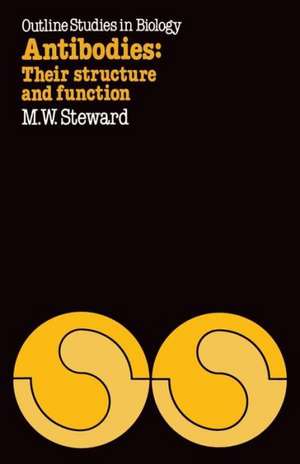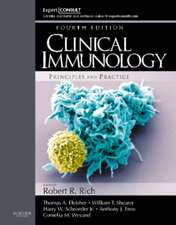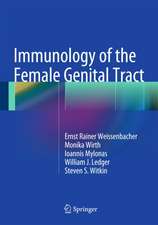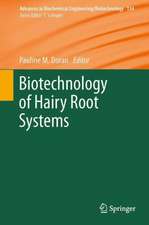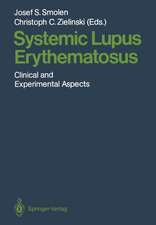Antibodies: Their structure and function: Their structure and function
Autor M. W. Stewarden Limba Engleză Paperback – 31 mar 1984
Preț: 617.18 lei
Preț vechi: 726.10 lei
-15% Nou
Puncte Express: 926
Preț estimativ în valută:
118.10€ • 124.53$ • 98.32£
118.10€ • 124.53$ • 98.32£
Carte tipărită la comandă
Livrare economică 10-24 ianuarie 25
Preluare comenzi: 021 569.72.76
Specificații
ISBN-13: 9780412256400
ISBN-10: 0412256401
Pagini: 96
Ilustrații: 96 p. 4 illus.
Dimensiuni: 140 x 216 x 5 mm
Greutate: 0.13 kg
Editura: SPRINGER NETHERLANDS
Colecția Springer
Locul publicării:Dordrecht, Netherlands
ISBN-10: 0412256401
Pagini: 96
Ilustrații: 96 p. 4 illus.
Dimensiuni: 140 x 216 x 5 mm
Greutate: 0.13 kg
Editura: SPRINGER NETHERLANDS
Colecția Springer
Locul publicării:Dordrecht, Netherlands
Public țintă
ResearchCuprins
1 Introduction.- 2 Isolation and purification of immunoglobulins and specific antibodies.- 2 1 Induction of serum antibodies.- 2.2 Isolation of immunoglobulins.- 2.3 Isolation of specific antibodies.- 2.4 Monoclonal antibodies produced by hybrid myelomas (hybridomas).- References.- 3 General structure of immunoglobulins.- 3.1 The basic four chain model for IgG.- 3.2 Immunoglobulins are glycoproteins.- 3.3 Amino acid sequence studies.- 3.4 The antibody binding site.- 3.5 Immunoglobulin domains.- 3.6 Allotypes and idiotypes of immunoglobulins.- References.- 4 Antibod -antigen interaction.- 4.1 The intermolecular forces involved in antibody—antigen interactions.- 4.2 The measurement of antibody—antigen reactions.- 4.3 The study of the chemistry of antibody—antigen reactions.- 4.4 The thermodynamics of antibody—antigen reactions.- 4.5 The kinetics of the antibody—antigen reactions.- 4.6 The biological aspects of antibody affinity.- 4.7 The specificity and cross-reactivity of antibody—antigen interactions.- References.- 5 Structure and biological activities of the immunoglobulin classes.- 5.1 Immunoglobulin G.- 5.2 Immunoglobulin A.- 5.3 Immunoglobulin M.- 5.4 Immunoglobulin E.- 5.5 Immunoglobulin D.- 5.6 Effector functions of antibodies.- References.- 6 The control of antibody production.- 6.1 The synthesis and secretion of antibody molecules.- 6.2 The genetic control of antibody biosynthesis.- 6.3 The generation of antibody diversity.- References.
Recenzii
Professor Steward's book...provides up-to-date coverage of all the most important considerations of the structure, synthesis and function in the sort of detail that few larger textbooks can match. The Times Higher Education Supplement
